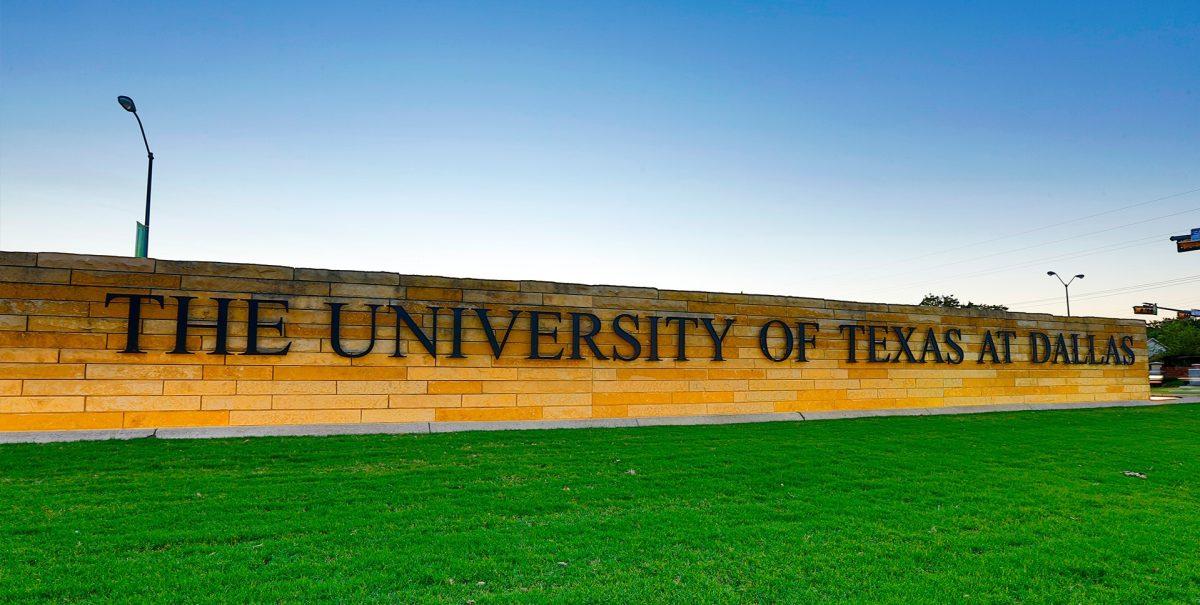Following a campus-wide evacuation for a bomb threat later determined to be a hoax, UTD is reviewing its emergency notification and communication policies to help reduce confusion in future evacuations.
Chief Larry Zacharias said the police department received a call at 2:01 p.m. from an anonymous person saying a bomb was on campus. The caller then demanded $10,000 within 30 minutes or they would detonate the bomb. Before the dispatcher could ask for any additional information, the caller hung up.
“It was determined that since we had not received any similar threats like this before, and considering the things going on around the country and the world, to be precautious and send out the UTD alert telling people to evacuate the buildings,” Zacharias said.
While the university sent out a text and email alert at 2:33 p.m. biomedical engineering sophomore Kang Choi was one of the students who did not receive an emergency notification. He was working in his research lab at the Bioengineering Sciences Building when another student told him about the evacuation.
“We stepped outside and we got all of our stuff. We were leaving and saw this huge mass exodus of all the researchers,” he said. “Everyone (was) kind of puzzled, kind of confused we didn’t really know what was happening.”
Zacharias said the third party alert system, Everbridge, automatically enrolls participants’ phone numbers when they enter the university’s system. However, if students aren’t enrolled in classes, such as over the summer, they are removed from the database. As of the previous notification test, almost 15,000 people are currently receiving the alert and the number will rise in the fall when students return to campus.
Interdisciplinary studies senior Michael Stout, who was in class at the time of the alert, also experienced confusion during the evacuation.
“Our professor tried to lock the doors but our doors didn’t lock, so we were peeking out into the lobby and out of the windows unsure of what was actually going on,” he said. “I’m not going to sprint for my life because of a gas leak in founders but I will sprint for my life for other reasons, you know? And that’s what we didn’t know.”
His class’s confusion dissipated after a student called the campus police and was informed of the bomb threat. At this point, his class evacuated and went to their cars. However, when Stout tried to drive away from campus, traffic was stalled.
“People didn’t have to speed out of here, but they could have been ushered in an orderly fashion and there was no one,” he said. “Not only was there no vehicle guidance, there was no crowd guidance either.”
To address these concerns, Zacharias said there have been several ‘debriefings’ to discuss how communication and notifications can be improved in future emergency situations. Additionally, an email was sent to employees and students detailing changes in policies for future emergency situations such as sending multiple alert messages to reiterate the instructions as well as provide updates on the situation and using speaker systems in buildings across campus to help with the evacuation.
Zacharias said several other universities have also received calls similar to UTD’s that the FBI believes originated from California. However, the caller masks their exact location by using spoofing software.
“I’m in the process of contacting our FBI university liaison to see if they’ll do a nationwide broadcast to all of the universities … and they will be able to advise all of the universities these (calls) are going around,” he said.
The Office of Emergency Management could not be reached for comment for this article.
If students are not receiving emergency notifications text UTDALERT to 888777, visit utdallas.edu/textme or email [email protected]











